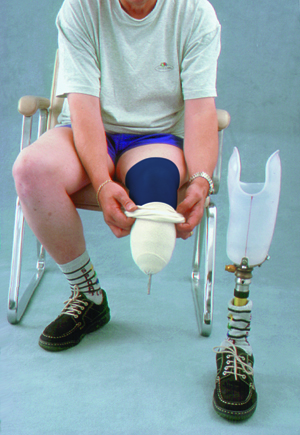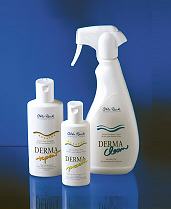 The prosthesis is a new important part of Your body.
The prosthesis is a new important part of Your body. It is a complex tool aimed at increasing Your independence and degree of mobility.
While You gain experience in the use of the prosthesis, You will be increasingly counting on this tool.
You need to follow several basic rules for maintaining the prosthesis in good working condition.
Remember that it is a mechanical device and as such, it will sometimes require maintenance or repair.
If You visit the Prosthetic Technician at least once a year, You could more easily identify potential issues and correct them before the prosthesis breaks down or becomes unusable. This is also a good opportunity to discuss new technologies and improvements, which become more and more accessible.
Even if well maintained, Your prosthesis could break.
If You notice clicking, squeaking or grating/scratching, immediately contact Your Prosthetic Technician. He/She has information about the warranty of every component of Your prosthesis and how the spare parts can be procured faster.
Perspiration: one of the most alarming problems for people who wear prostheses is the sweating of the stump. This type of sweating could be significant to extreme, since the stump is tightly enveloped in the socket.
If You notice clicking, squeaking or grating/scratching, immediately contact Your Prosthetic Technician. He/She has information about the warranty of every component of Your prosthesis and how the spare parts can be procured faster.
Perspiration: one of the most alarming problems for people who wear prostheses is the sweating of the stump. This type of sweating could be significant to extreme, since the stump is tightly enveloped in the socket.
Sweating could be a source of unpleasant smell and bacteria as well as skin problems.
The more consistently You wear Your prosthesis, the faster the limb will get used to it and the sweating will decrease.
If You are still having trouble, You need to consult Your Prosthetic Technician.
Make sure You have a sufficient number of prosthetic socks. You may need to change socks more than once a day because of the perspiration. You could also use a special anti-perspiration spray for the stump.
It is very important to wash the stump every day after You’ve worn prosthesis.
Use neutral soap, rinse abundantly with clean water afterwards, and carefully wipe with a towel.
Do not soak the limb in water and do not shave it.
Let it dry well before You put the prosthesis back on.
In the evenings You can apply a hydrating cream on the stump.
When You shower, carefully check the surface of the stump for reddening, abrasion or bruised spots or blisters.
This practice is important for all but mostly for those of You who have diabetes or a vascular illness.
Check Your healthy leg as well for signs of bruising or redness.
Contact Your Prosthetic Technician after the first symptoms of damage to the skin.
Care for the socket
The socket is part of Your body and as such, it needs to be cleaned on a daily basis with soap and water.
Many people prefer doing this with their evening shower, as the socket could dry during the night.
The more consistently You wear Your prosthesis, the faster the limb will get used to it and the sweating will decrease.
If You are still having trouble, You need to consult Your Prosthetic Technician.
Make sure You have a sufficient number of prosthetic socks. You may need to change socks more than once a day because of the perspiration. You could also use a special anti-perspiration spray for the stump.
 Daily wash
Daily wash
It is very important to wash the stump every day after You’ve worn prosthesis.Use neutral soap, rinse abundantly with clean water afterwards, and carefully wipe with a towel.
Do not soak the limb in water and do not shave it.
Let it dry well before You put the prosthesis back on.
In the evenings You can apply a hydrating cream on the stump.
When You shower, carefully check the surface of the stump for reddening, abrasion or bruised spots or blisters.
This practice is important for all but mostly for those of You who have diabetes or a vascular illness.
Check Your healthy leg as well for signs of bruising or redness.
Contact Your Prosthetic Technician after the first symptoms of damage to the skin.
Care for the socket
The socket is part of Your body and as such, it needs to be cleaned on a daily basis with soap and water.
Many people prefer doing this with their evening shower, as the socket could dry during the night.



